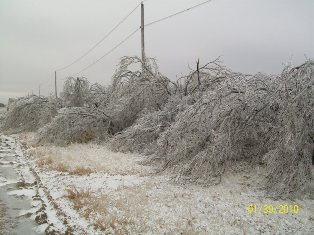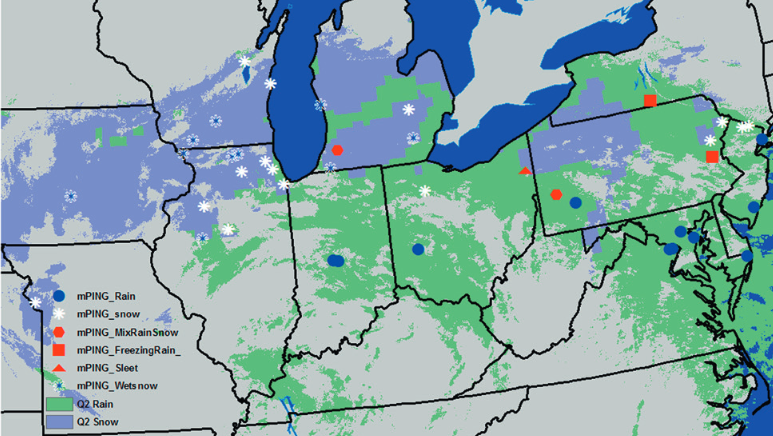 NSSL is now collecting two types of winter weather reports from the public to help evaluate the performance of a new winter weather precipitation algorithm. NOAA National Weather Service (NWS) radars across the U.S. are in the process of being upgraded with dual-polarization technology that can detect the difference between rain, sleet, snow, and hail. The algorithm sorts dual-polarized radar data into types of liquid or frozen precipitation to help forecasters quickly assess a precipitation event and better forecast how much will fall.
NSSL is now collecting two types of winter weather reports from the public to help evaluate the performance of a new winter weather precipitation algorithm. NOAA National Weather Service (NWS) radars across the U.S. are in the process of being upgraded with dual-polarization technology that can detect the difference between rain, sleet, snow, and hail. The algorithm sorts dual-polarized radar data into types of liquid or frozen precipitation to help forecasters quickly assess a precipitation event and better forecast how much will fall.
To help evaluate and refine the algorithm, the mostly student-run NSSL/CIMMS Severe Hazards Analysis and Verification Experiment (SHAVE) started collecting winter weather precipitation reports through phone surveys during the week of February 3, 2012. SHAVE reports, when combined with the voluntary reports collected by the NWS, creates a unique and comprehensive database of winter weather weather events used to evaluate algorithm performance. SHAVE previously had been a primarily summer project, collecting more than 45,000 reports of hail size, wind damage and flash flooding since it began in 2005.
NSSL’s Precipitation Identification Near the Ground (PING) project requests public precipitation reports at http://www.nssl.noaa.gov/projects/winter/ from any area within 90-miles of a radar upgraded with dual-polarization radar technology. Researchers compare the reports of precipitation with what is detected by the dual-polarized radar data. Volunteers have submitted more than 5,000 reports of snow, ice pellets, drizzle and rain since the beginning of the project in 2006.
Both projects are ongoing.

